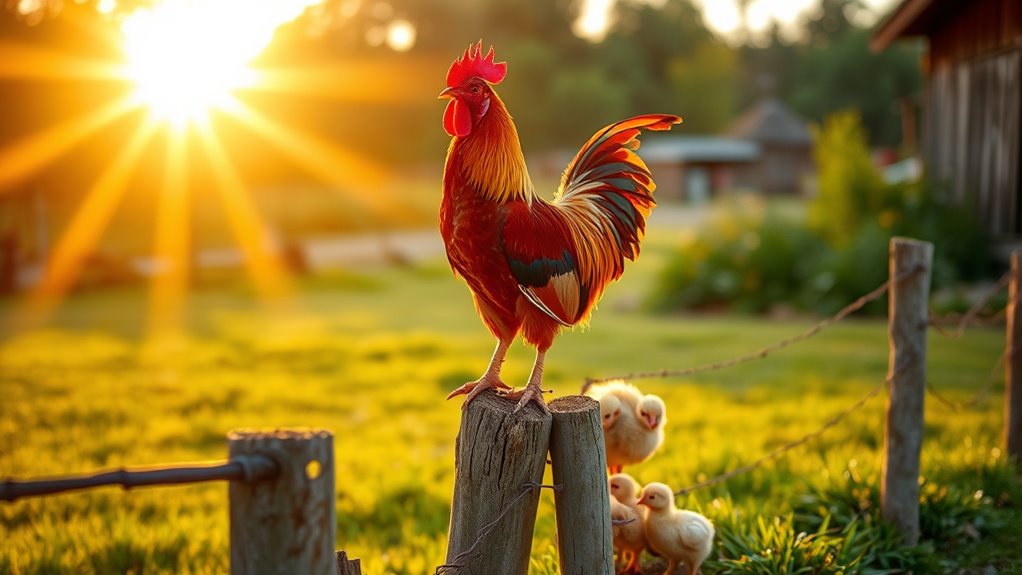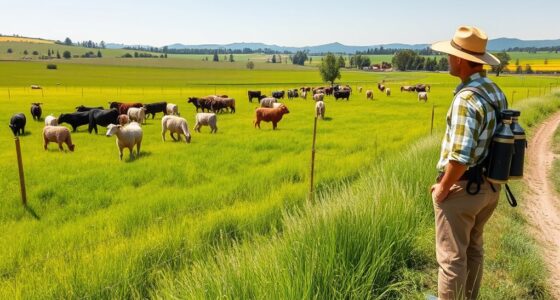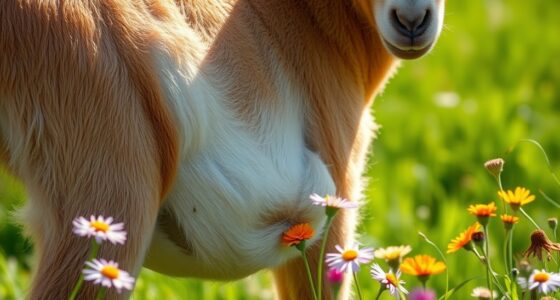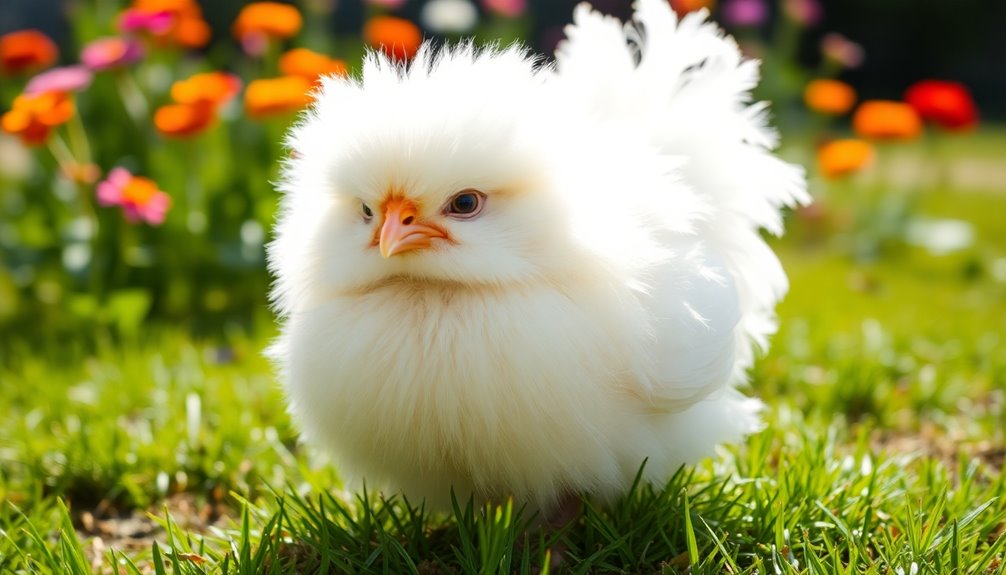Roosters typically start crowing between four to six months old, marking a significant developmental milestone. Some may even attempt to crow as early as three months, producing softer sounds at first. Crowing can be influenced by various factors, including breed, environment, and social dynamics. Your rooster's health and nutrition also play key roles in vocal development. If you're curious about what makes them crow and the factors involved, keep exploring this fascinating topic!
Key Takeaways
- Roosters typically start crowing between four to six months old, with some initiating sounds as early as three months.
- Smaller breeds, like bantams, tend to crow earlier than larger breeds.
- Environmental factors, such as light exposure and living conditions, can influence the onset of crowing.
- Social dynamics, including interactions with other roosters, can stimulate vocalization and crowing behavior.
- A balanced diet and healthy living conditions are essential for proper vocal development in roosters.
Understanding Rooster Development
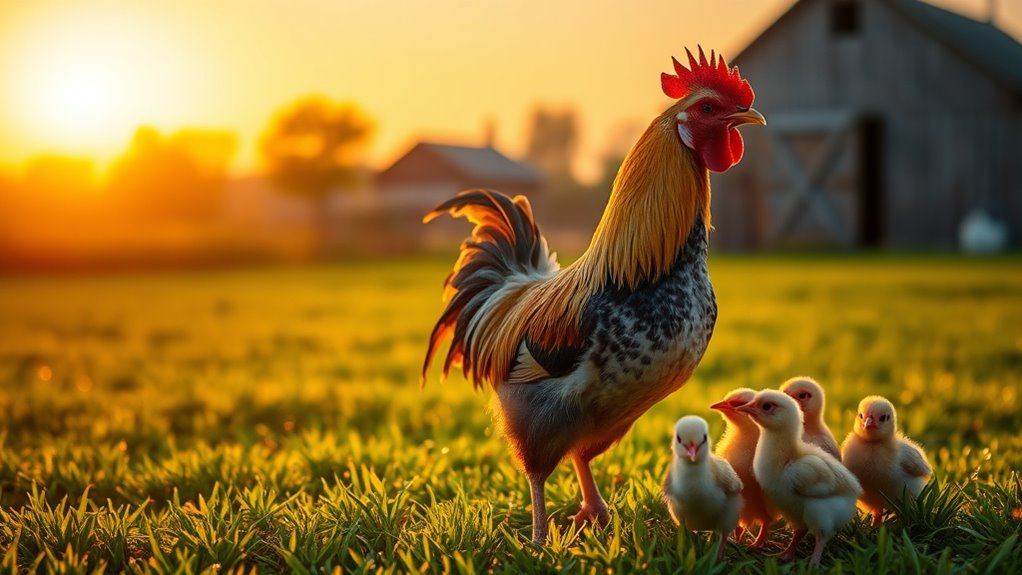
When you observe a rooster's growth, you'll notice that development unfolds in distinct stages, each crucial to its journey from hatchling to mature bird.
Roosters hatch from eggs after about 21 days of incubation and enter chickhood, where they grow rapidly, exploring their surroundings.
Between 8 and 20 weeks, they enter the juvenile stage, developing sexual characteristics like large combs and wattles.
By around 20 weeks, roosters reach adulthood, showcasing breed-specific colors and establishing their roles in the flock. Key indicators of maturity include crowing and mating behaviors.
Factors like breed variations, nutrition, and environment significantly influence their growth and health, so providing the right conditions is essential for a thriving rooster.
Age Range for Crowing
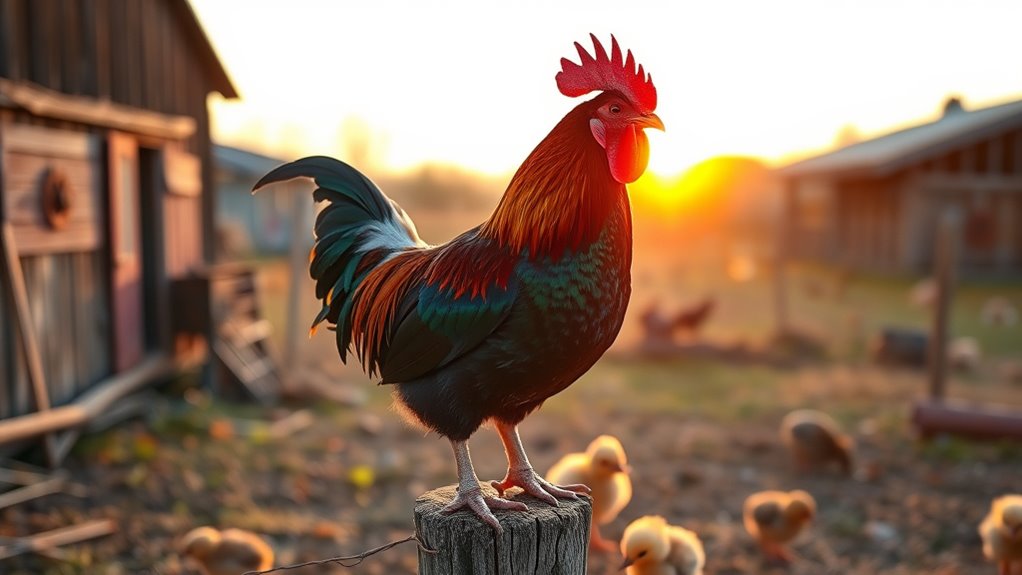
As roosters mature, they start to showcase their vocal abilities, with crowing being one of the most noticeable signs of reaching sexual maturity.
Generally, you can expect most roosters to start crowing between four to six months old. Some may surprise you by attempting to crow as early as three months, although their initial sounds might resemble a wheeze or strained noise.
Most roosters begin crowing between four to six months, with some even trying as early as three months.
By four to five months, their crowing becomes more pronounced and consistent.
Keep in mind that the age at which a rooster starts crowing can vary based on breed; smaller breeds often crow earlier than larger ones.
Environmental factors, nutrition, and social interactions can also influence when your rooster finds his voice.
Factors Influencing Crowing Onset
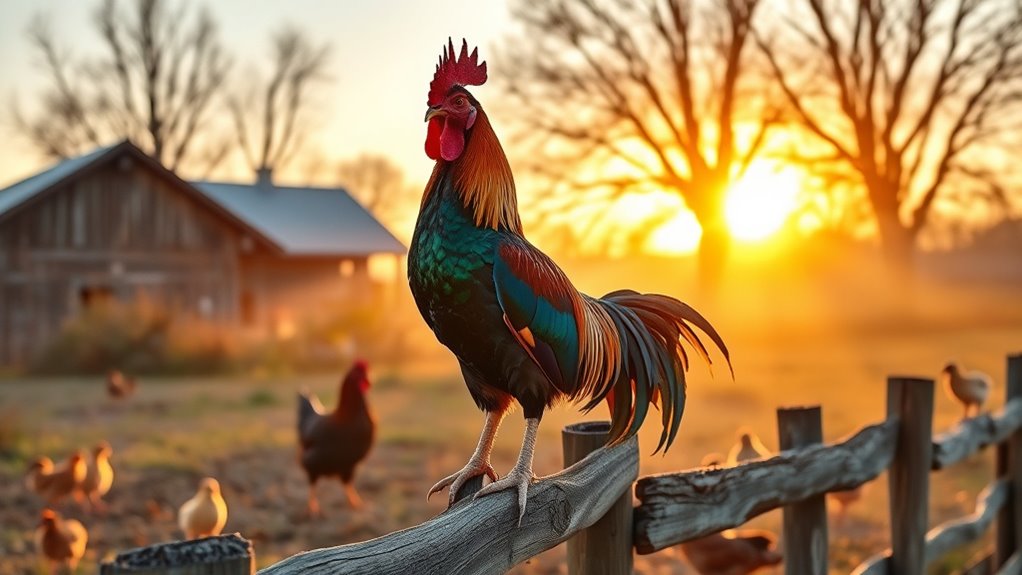
Several factors influence the onset of crowing in roosters, making it a fascinating aspect of their development.
Breed variations play a significant role; for instance, bantams often crow earlier than larger breeds.
Environmental influences, like living conditions and exposure to light, can either encourage or delay crowing. Stressful environments hinder vocalization, while adequate space and social interaction promote it.
Social dynamics also matter; dominant roosters typically crow more frequently, and the presence of other roosters can stimulate vocalization.
Additionally, health and nutrition are crucial— a balanced diet supports vocal development, while deficiencies can delay crowing.
Lastly, developmental stages, including physical maturity and hormonal changes, significantly impact when your rooster will start to crow.
The Evolution of Crowing Sounds
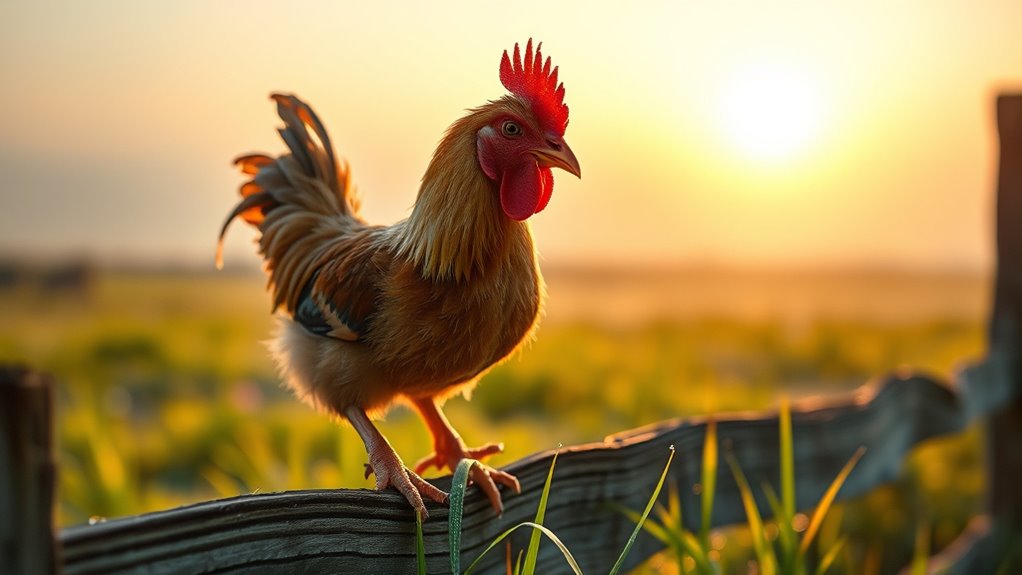
Crowing sounds in roosters have evolved significantly over time, adapting for both communication and survival. This unique vocalization helps assert dominance and attract mates. Each rooster has its distinct crow, often influenced by environmental sounds, making their calls unique.
When a rooster crows, it can reach an impressive 100 decibels, similar to the noise of a lawnmower or chainsaw, prompting the rooster's ears to close automatically to protect against hearing damage. Hens, however, only narrow their ears, reflecting their different vocalization needs.
This evolutionary adaptation not only enhances their social interactions but also helps establish a clear hierarchy within flocks, ensuring the highest-ranking rooster crows first.
Reasons Why Roosters Crow
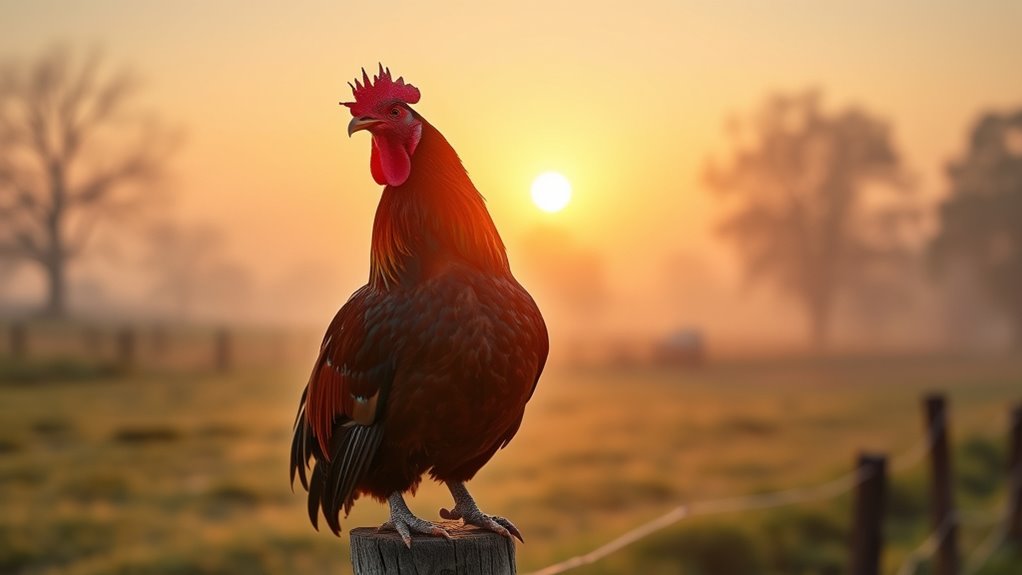
While many people associate roosters with the dawn chorus, their crowing serves a variety of essential functions beyond simply marking the time of day.
For one, roosters crow to assert dominance and establish their territory, ensuring other roosters know who's in charge. This vocalization also acts as a form of communication with hens and fellow roosters, signaling important information.
Additionally, crowing serves as a warning call against potential predators, helping to protect their flock. You'll find roosters crowing to announce food availability, reinforcing their role within the group.
Crowing not only warns of predators but also signals food availability, highlighting the rooster's vital role in the flock.
Their crowing patterns are influenced by their social dynamics, hormonal changes, and even interactions with other roosters, making it an essential aspect of their behavior.
The Role of Environment in Crowing
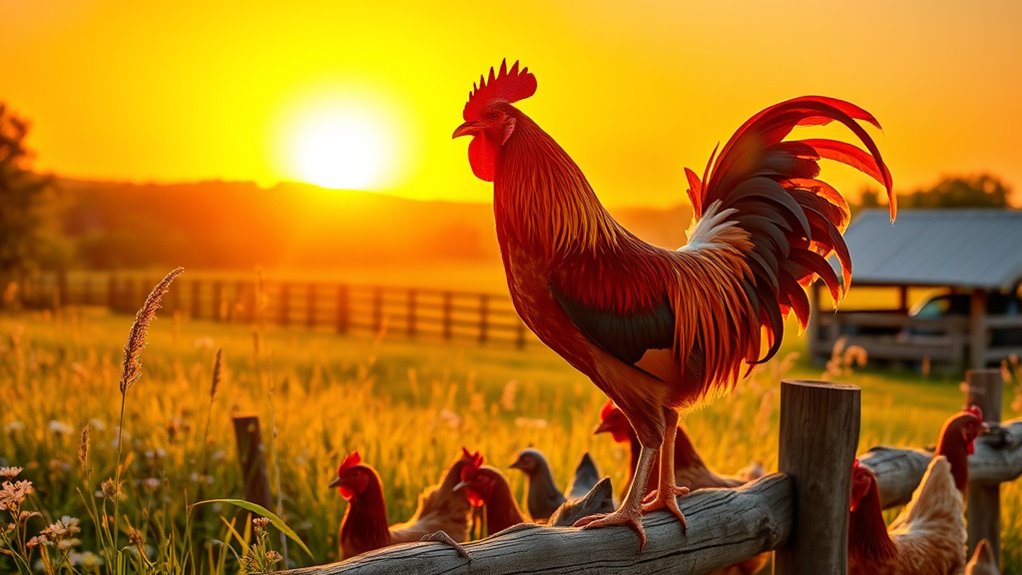
Understanding the role of the environment is crucial when it comes to a rooster's crowing behavior. Different breeds mature at varying rates, which means some roosters might start crowing earlier than others. Stressful conditions can delay this onset, so maintaining a calm environment is key.
While light exposure can influence crowing, internal biological clocks primarily drive this behavior. Roosters that have space to roam and proper nutrition tend to develop healthier vocalizations.
Additionally, being around other roosters can accelerate their vocal development. Larger flocks with more noise might also affect when they start crowing.
Social Dynamics Among Roosters
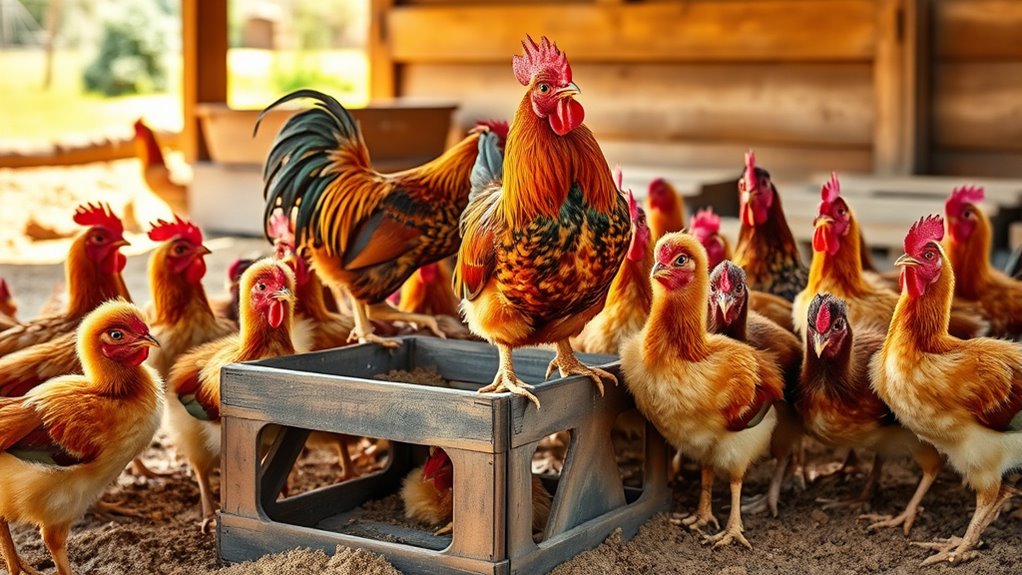
Social dynamics among roosters play a crucial role in their overall behavior and wellbeing. In a flock, roosters establish a social hierarchy through physical confrontations and posturing. The alpha rooster leads the group, settling disputes and having first access to resources.
Beta roosters support the alpha but must respect their rank. This hierarchy can shift when new roosters are introduced or as existing ones age.
Beta roosters play a crucial role, supporting the alpha while adapting to changes in the flock's hierarchy.
Interactions with hens are also vital; roosters protect and guide them while maintaining flock cohesion. The ideal ratio is one rooster for every 8 to 10 hens.
In larger flocks, multiple roosters may form sub-flocks, but you'll need to ensure there's enough space to minimize aggression and conflicts. Additionally, crowing behavior is influenced by their position within this hierarchy, as dominant roosters may crow more frequently to assert their status.
Health Considerations for Crowing
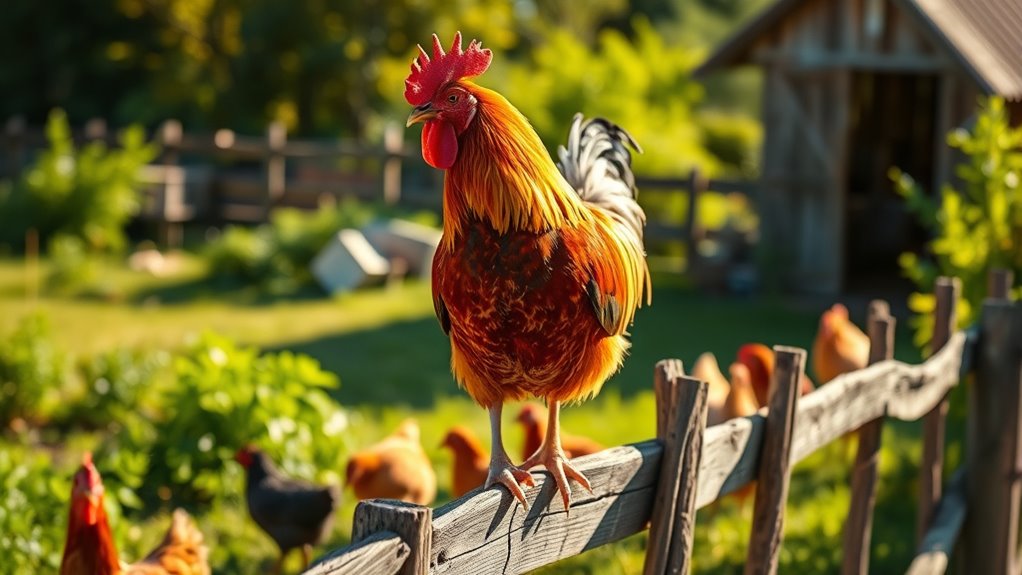
Health considerations play a vital role in a rooster's ability to crow effectively. Injuries, especially to the neck and throat, can temporarily silence your rooster as it avoids drawing predator attention.
If you notice a lack of crowing, consult a veterinarian to rule out any vocal cord damage. Illness can also cause roosters to stop crowing, as they conserve energy for recovery. Monitoring their health is essential to prevent prolonged silence.
A balanced diet and adequate water intake support vocal health and overall well-being. Regular health checks can help you identify any nutritional deficiencies that might delay or reduce crowing.
Ensuring a stress-free environment further promotes a rooster's natural crowing behavior.
Encouraging Natural Crowing Behavior
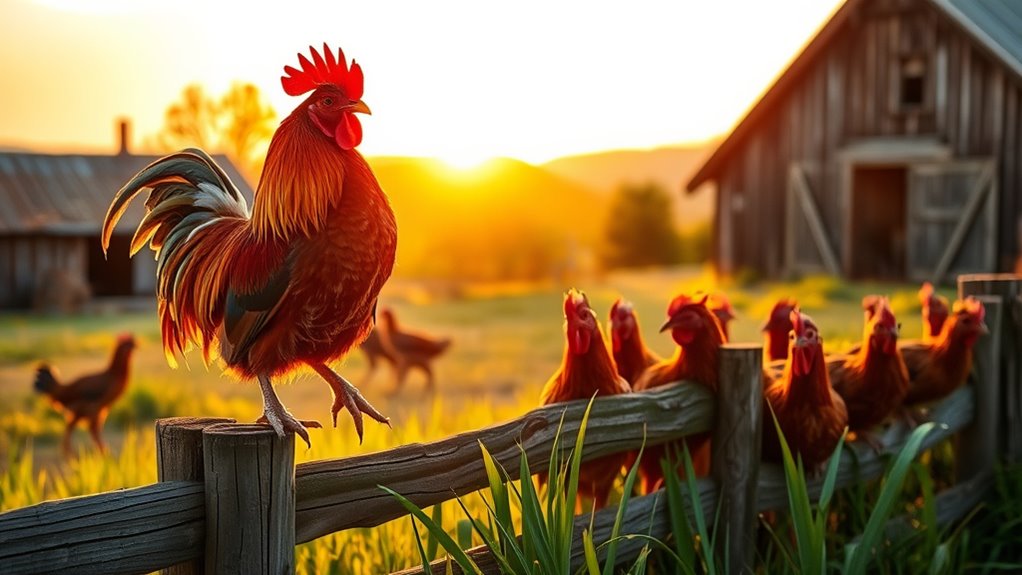
To encourage natural crowing behavior in your roosters, it's essential to create an environment that fosters their instincts.
Start by providing adequate space and social interaction; the presence of other roosters and hens can stimulate crowing.
Keep noise levels balanced, as high sounds may either encourage or deter crowing. Proper lighting and a stable, stress-free environment are crucial for their development.
You can also train your roosters through mimicry and positive reinforcement, rewarding them when they crow.
Establishing a consistent routine helps stabilize their crowing patterns.
Lastly, expose them to external crowing sounds to stimulate their natural instincts.
Frequently Asked Questions
Can Some Breeds Crow Louder Than Others?
Absolutely, some breeds do crow louder than others!
If you've got larger breeds, like Rhode Island Reds, you'll notice their crows are deeper and more powerful.
On the other hand, bantams might surprise you with their volume, often crowing earlier and sometimes even louder than their bigger counterparts.
Factors like environment and social interactions also play a role, so don't be surprised if your roosters have unique crowing characteristics based on their surroundings!
Do Roosters Crow at Night?
Did you know that about 20% of roosters may crow at night?
While it's less common, roosters can indeed crow during nighttime, often triggered by disturbances or environmental changes.
If you notice your rooster crowing after dark, it might be responding to unfamiliar noises or feeling threatened.
Stress and social dynamics also play a role, so ensuring a calm environment can help reduce nighttime crowing and promote better sleep for you and your flock.
How Can I Stop My Rooster From Crowing?
If you're looking to stop your rooster from crowing, try some effective methods.
Insulate the coop and control the light to limit triggers. You can also play soft music to mask sounds that provoke crowing.
Consider using a no-crow collar or reducing your flock size to minimize competition.
Providing plenty of hens can keep him occupied, and enriching his environment will help reduce boredom-related crowing.
Will My Rooster Crow Less if Kept Alone?
You might think isolating your rooster will quiet him down, but it's not that simple.
While keeping him alone could reduce his crowing frequency due to a lack of social interaction, he'll still respond to environmental triggers like light and noise.
His internal clock will guide him, and even without companions, he may still crow.
To truly minimize crowing, focus on creating a stress-free environment while considering his natural instincts.
Do Hens Respond to Rooster Crowing?
Hens do respond to rooster crowing in various ways. When they hear a crow, you might notice them freeze or hide, as they recognize it as an alarm call.
Some hens even make complaining sounds afterward, possibly due to dominance issues or personal preferences.
Their responses can indicate their social dynamics within the flock, showing how they interact with each other and the rooster.
It's fascinating to watch these behaviors unfold!
Conclusion
As dawn breaks and the world stirs awake, you'll find that roosters, those feathery heralds of morning, start crowing around 5 to 6 months old. Their calls echo like a vibrant symphony, shaped by age, environment, and social bonds. By nurturing their natural instincts and providing a supportive home, you'll witness these birds transform into confident vocalists. So, as the sun rises, listen closely; each crow is a celebration of life, marking the start of a new day.

